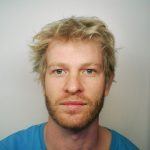Link to Pubmed [PMID] – 26732388
Nat Commun 2016 Jan;7:10227
Transition state theory (TST) provides a simple interpretation of many thermally activated processes. It applies successfully on timescales and length scales that differ several orders of magnitude: to chemical reactions, breaking of chemical bonds, unfolding of proteins and RNA structures and polymers crossing entropic barriers. Here we apply TST to out-of-equilibrium transport through confined environments: the thermally activated translocation of single DNA molecules over an entropic barrier helped by an external force field. Reaction pathways are effectively one dimensional and so long that they are observable in a microscope. Reaction rates are so slow that transitions are recorded on video. We find sharp transition states that are independent of the applied force, similar to chemical bond rupture, as well as transition states that change location on the reaction pathway with the strength of the applied force. The states of equilibrium and transition are separated by micrometres as compared with angstroms/nanometres for chemical bonds.
